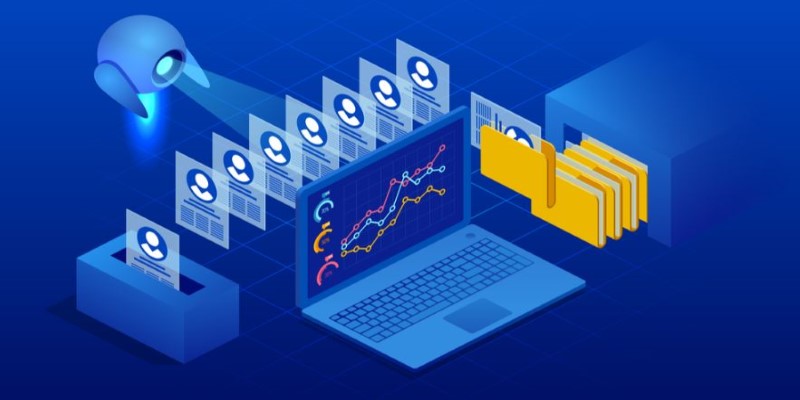A strong resume is the key to getting hired, but the hiring process has changed. With AI-driven recruitment tools analyzing applications, job seekers must rethink how they craft their resumes. A Generative AI Resume isn’t just about listing skills and experience—it’s about structuring information in a way that both human recruiters and AI-powered systems can easily understand.
The competition for AI-related roles is fierce, and having a resume that aligns with modern hiring trends can be the difference between getting noticed or being overlooked. This article breaks down the key aspects of writing a Generative AI Resume, ensuring your application is tailored to both machines and decision-makers.
Understanding the Role of AI in Resume Screening
Before writing a Generative AI Resume, it's essential to understand how AI influences hiring. Many companies use AI-powered screening tools to scan applications, filtering out candidates before human recruiters even see them. These systems analyze keywords, structure, and formatting, ranking resumes based on relevance. Without optimizing your AI job application, it may not end up in a recruiter's hands.
Hiring algorithms focus on structured content, relevant keywords, and measurable achievements. They prefer clarity over creativity, meaning resumes overloaded with design elements may be discarded. AI also checks for linguistic consistency, and job applicants must apply specific industry vocabulary while being professional and natural-sounding. The aim is to create a resume that meets both AI screening programs and human hiring managers.
Key Elements of a Generative AI Resume
A well-written Generative AI Resume must be optimized for AI-based hiring systems while being readable by human recruiters. It must have a straightforward yet effective structure with clear sections that best present qualifications.
Compelling Summary

A resume summary is a concise yet effective introduction to your expertise and career success. As AI filtering software scans for relevance in AI career profiles, the earlier mention of job-relevant keywords helps gain more exposure. A solidly written summary creates a strong foundation for the rest of the resume so both AI and recruiters know your strengths at first glance.
Clearly Defined Skills Section
Unlike traditional resumes that blend skills within experience descriptions, AI-friendly resumes often feature a dedicated section. Skills should be categorized based on expertise areas, such as machine learning, natural language processing, or automation. Listing technical proficiencies clearly makes it easier for AI filters to match your qualifications with job descriptions.
Experience with Quantifiable Achievements
Experience should be structured with measurable results. AI screening software prioritizes impact-driven statements over generic descriptions. Instead of vague phrases like "worked on AI projects," a stronger approach would be: "Developed a chatbot using NLP, improving customer engagement by 30%." AI-powered hiring systems rank resumes higher when they include performance-driven data, making it essential to provide concrete examples of accomplishments.
Education and Certifications
AI-driven hiring tools look for structured education sections. If applying for AI-related roles, listing specialized courses, certifications, and technical training in an easy-to-scan format improves visibility. Avoid blending education details into experience descriptions, as AI systems prefer well-organized sections. Certifications in machine learning, data science, or cloud computing can further strengthen a resume’s credibility in the competitive AI job market.
Optimizing for AI and Human Recruiters
Resumes must strike a balance between optimization and readability to increase their chances of passing AI filters while appealing to human recruiters. A Generative AI Resume should use concise, professional language while incorporating relevant AI career profile terms.
Clean and AI-Friendly Formatting
Simple, clean layouts with standard fonts ensure AI compatibility. Non-standard designs, tables, or graphics can confuse AI systems, leading to misinterpretation. Stick to traditional formats to ensure your resume is scannable by both AI tools and human recruiters. A straightforward layout enhances both readability and compatibility with the ATS (Applicant Tracking System).
Strategic Keyword Integration
AI-driven hiring tools search for specific keywords from job descriptions. Incorporating relevant terms naturally into the experience, skills, and summary sections ensures higher ranking without overstuffing. Focus on using industry-related terminology smoothly, improving your chances with both AI systems and recruiters who value a well-crafted, job-specific resume.
Customization for Each Job Application

Sending a generic resume may hinder AI ranking. Tailoring your resume to each job listing enhances its relevance. Adjust sections like the summary and skills to match the job description closely. Customization makes your resume stand out to both AI systems and human recruiters, increasing your visibility and chances of success.
Proofreading for Accuracy and Clarity
AI screening tools detect inconsistencies, spelling errors, and formatting issues. Typos or irregularities can cause your resume to rank lower. Proofreading ensures your resume is error-free and professional. A well-proofread document not only improves AI compatibility but also conveys attention to detail, making a strong impression on both AI systems and recruiters.
Tailoring Your Generative AI Resume for Different Roles
Customizing your Generative AI Resume for each job application is essential. Analyze the job description to identify key skills and qualifications and ensure these are reflected in your resume. If the role emphasizes certain technical skills, such as machine learning or Python, highlight them prominently in the skills and experience sections. Adjust the language to match the tone and terms used in the job description, as AI systems rank resumes based on keyword alignment.
Additionally, focus your experience to suit the role—emphasizing research for academic positions or technical projects for engineering roles. Tailoring your resume not only helps it pass through AI filters but also presents you as the ideal candidate for each specific job, increasing your chances of success.
Conclusion
The hiring landscape has shifted, making a Generative AI Resume essential for standing out. AI-driven tools prioritize structured content, clear formatting, and relevant keywords, so job seekers must optimize resumes for both AI systems and human recruiters. Focusing on measurable achievements, keyword integration, and clean design increases visibility. Striking the right balance between AI optimization and readability is key. Adapting to these changes ensures job seekers stay competitive and improve their chances of landing their ideal roles in the evolving job market.
